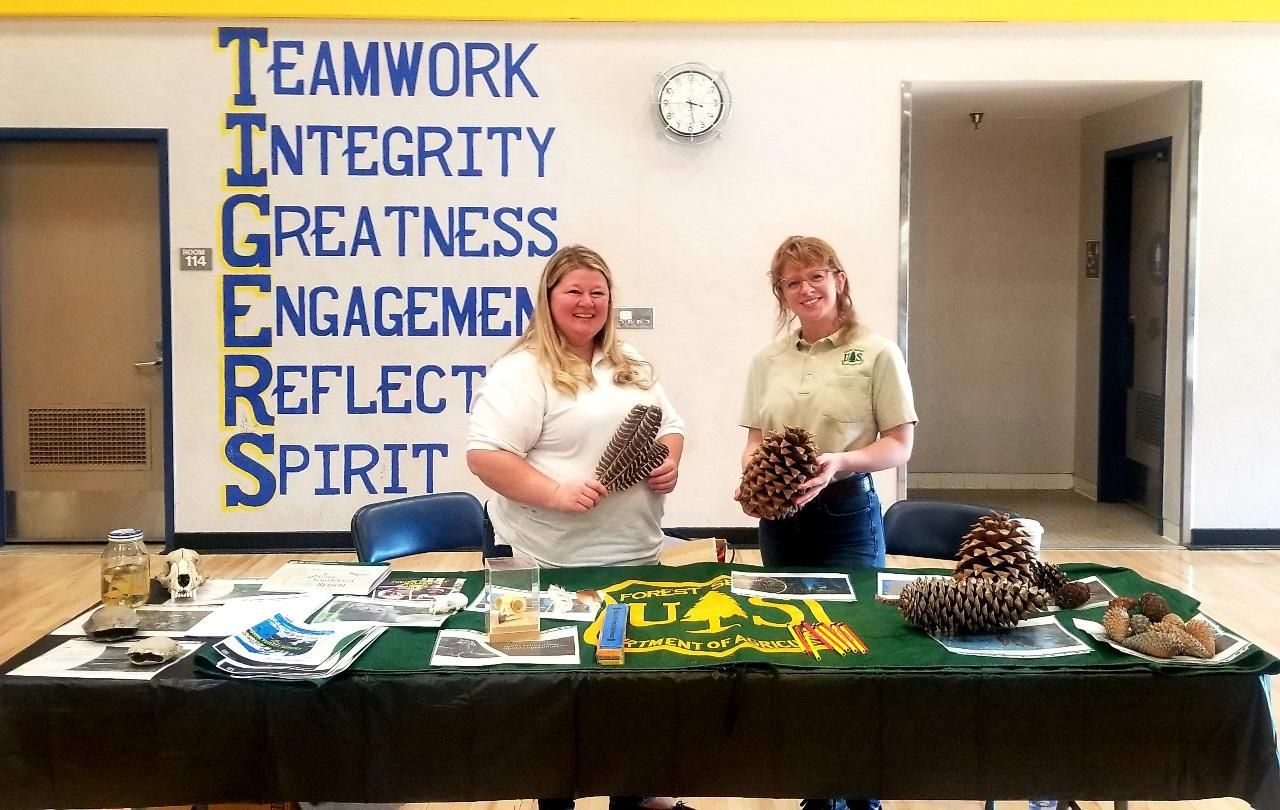Women's Equality Day 2025 - Laura Leidner
The 19th Amendment to the Constitution - granting women the right to vote - was certified on August 26, 1920. In commemoration of this, in 1973 Congress designated August 26 as "Women's Equality Day" to remind us of the heroic women who advanced the Women's Suffrage movement. In recognition of Women's Equality Day, Tuleyome is highlighting three women who are dedicated to our public lands: Laura Leidner (US Forest Service), Kay-Leigh Barnitz (Bureau of Land Management), and Jennifer Onufer (Bureau of Reclamation). Hear about Laura's journey below and learn about Kay-Leigh here and Jennifer here.
Thank you, Laura, for your passion and dedication to our public lands!
I went to the University of Georgia and studied English, mostly because I enjoy writing. After college I worked for small businesses and startup companies doing websites and social media marketing. I eventually landed a communication job at the Centers for Disease Control and Prevention and worked in public health for seven years. After camping and hiking in national forests and parks in the Southeast, I became curious about working for public lands and started looking for opportunities. In 2021 I transferred to the Forest Service to a public affairs position with the Mendocino National Forest. One perk of being a federal employee is that there are hiring paths that allow you to transfer to other agencies (if you meet the qualifications of that position).
I grew up in South Georgia where my parents owned a 60-acre pine tree farm with several creeks, ponds and wetlands. Stewardship of the land was something ingrained in me as a kid, though I’m sure I didn’t appreciate it at the time. I think because I grew up in a rural place surrounded by trees, I have always felt inspired by landscapes and nature. It is amazing to me that part of my job is being out in the field visiting project sites and talking to the public about the activities and places they love. Public lands offer many job opportunities that appeal not only to people who love the outdoors but to people who crave the feeling of wanting to make an impact.
I’m currently the Public Affairs Officer on the Mendocino National Forest, which is the eastern spur of the North Coast Range in Northern California. This September will mark four years that I’ve been in the position. I have also done several short-term assignments as a public information officer on wildfire incidents in California, including on the Tahoe National Forest, San Bernardino National Forest, Angeles National Forest, and Sequoia National Park.
My job is to provide the public with information they need from emergency safety info to some of our fun programs like Every Kid Outdoors and Christmas Tree permits. I love to visit our forest’s project sites, host educational booths at community events, visit schools, meet partners, and assist neighboring forests.
My parents are my biggest inspiration. My mom was a federal employee and a district conservationist for the Natural Resources Conservation Service, and my dad was an agricultural journalist who wrote for Progressive Farmer and other farming magazines. They both served their communities and helped people tend the land.
The most profound project I’ve been involved with is the Nome Cult Walk, which happens each September to commemorate the path of Native Americans who were forced to march from Chico to Covelo over the North Coast mountains in 1863. In 2023 I collaborated with the Nome Cult Walk Cultural Committee and the Forest Service’s Region 5 videographer Andrew Avitt to produce a short video and companion story about the walk. Imagine walking across the Sacramento Valley in the high temperatures of September, ascending the unforgiving foothills, feeling the sorrow of being separated from your homeland and family. It is a humbling experience. The healing, hope and resilience of the people who carry on the Nome Cult Walk tradition move me deeply, and it’s been honor to walk with them on the journey. (You can watch the video on YouTube and read the story online.)
I have an extremely inconvenient fear of heights. I try not to let it hold me back, but it is an ongoing struggle. The best thing that helps me is gradual exposure, plus following all the safety best practices, and focusing on a task. With support from my coworkers, I have made some huge progress when I assisted cone collection at our Chico Seed Orchard, harvesting cones from a lift about 60-80 ft in the air. The first few moments in the lift as it rises to the tree canopy is alarming, but once you are there, clipped in safely, collecting healthy cones is immensely satisfying. Did you know that Ponderosa pines produce their best cones at the crown? Cone collection is an important part of reforestation after severe wildfires. Cones collected at the orchard are processed for their seed. The seed gets tested, saved in a seed bank, and later grown in a nursery for planting future forests.
It’s legitimately hard and stressful to figure out a career, how to make money, and be successful. So I first just want to acknowledge that fact. There are so many paths and possibilities, and the path I find myself on is a total surprise to me and I love that. My philosophy has always been to be curious and patient. One thing I appreciate about the Forest Service is that it is an agency that helps you learn on the job and fosters those who show interest. Right now I work in public affairs, but at the same time I’m helping our forester with a project for one or two days a week. Who knows where that might take me?
RECENT ARTICLES







